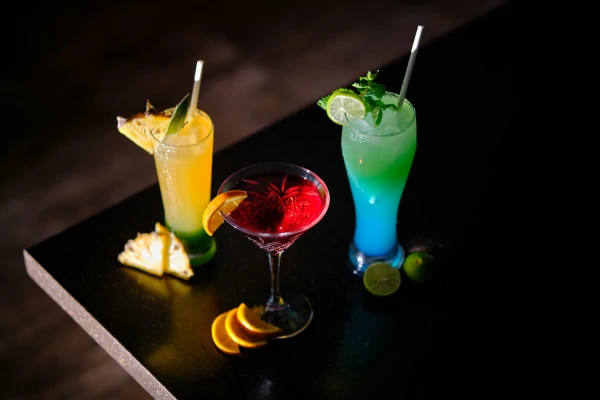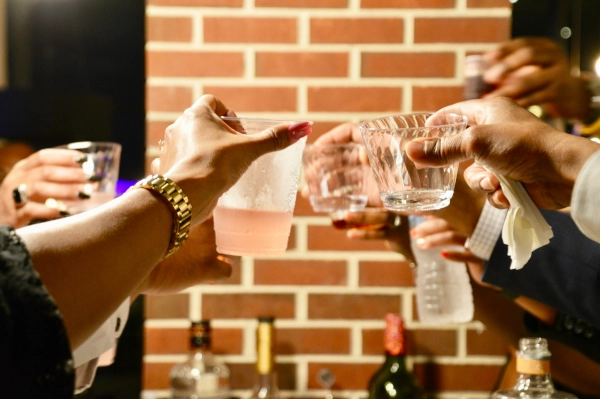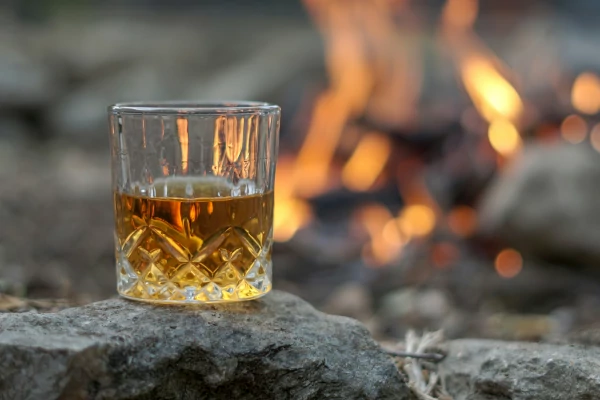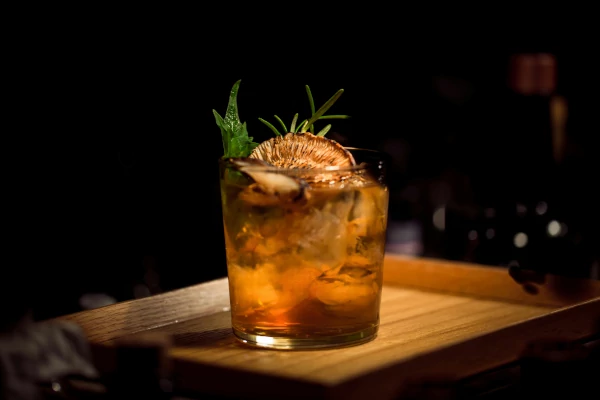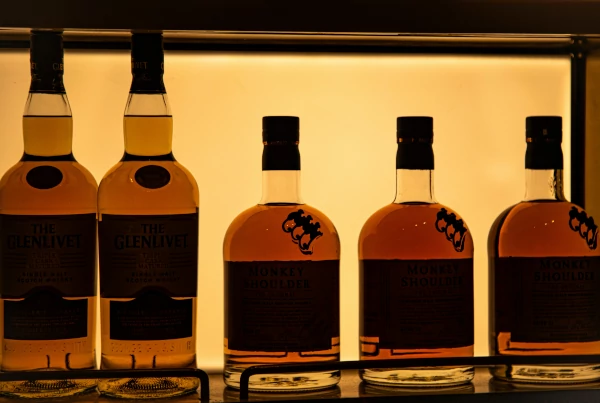Rum vs. Whiskey: A Comparative Guide to Two Iconic Spirits
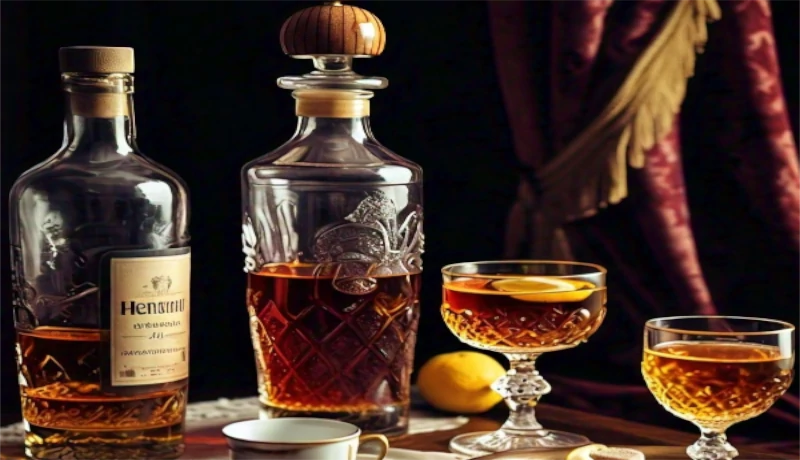
Rum and whiskey are two iconic spirits with distinct histories, production methods, and flavor profiles. This guide compares their differences, helping you understand what makes each spirit special and how to best enjoy them.
When it comes to iconic spirits, rum and whiskey stand out as two of the most beloved and storied liquors in the world. Each has a deep history, a unique production process, and distinct flavor profiles that set them apart. While both are enjoyed by casual drinkers and connoisseurs alike, there are significant differences between them. Whether you're a seasoned whiskey enthusiast or a rum aficionado, understanding the nuances of these two spirits can elevate your appreciation and enjoyment.
In this article, we'll compare and contrast rum and whiskey in terms of their flavor, production methods, and history—helping you understand what makes each spirit special and how to best enjoy them.
It is advisable to have alcohol/liquor drinking license in Maharashtra. You can apply online for alcohol/liquor drinking liquor license here : Click Here to Apply Now
1. The History of Rum vs. Whiskey
1.1 Rum: A Spirit of the Tropics
Rum’s roots trace back to the Caribbean and other sugarcane-growing regions in the 17th century. It was discovered when European settlers began fermenting sugarcane juice, a byproduct of sugar production, and distilling it into alcohol. Rum quickly became a staple in colonial trade, especially during the transatlantic slave trade, where it played a key role in the economy of the New World.
The term “rum” likely comes from the British slang “rumbullion,” meaning a great upheaval or tumult, referring to the drink's ability to cause a stir. Today, rum is produced in a variety of regions, including the Caribbean, Latin America, and increasingly in other parts of the world. The historical connection to piracy, naval life, and tropical islands has contributed to its fun-loving and carefree image.
1.2 Whiskey: A Spirit of Tradition and Craft
Whiskey (or whisky, depending on the region) has a longer and more geographically diverse history, with origins traced to ancient civilizations like the Mesopotamians and Egyptians, who were distilling fermented grain in rudimentary forms. However, the modern whiskey we know today began to take shape in Ireland and Scotland in the 15th and 16th centuries, with the first written record of whiskey appearing in the 1400s.
The word “whiskey” comes from the Irish “uisce beatha” (pronounced "ish-ka ba-ha"), meaning "water of life," which was later shortened to “usquebaugh,” and then anglicized to “whiskey.” Whiskey has since spread to various countries, most notably Scotland, Ireland, the United States, and Canada, with each region developing its own distinctive style and flavor profiles.
2. The Production Methods: Different Grains, Different Processes
2.1 Rum Production: From Sugarcane to Spirit
Rum is made primarily from sugarcane byproducts, such as molasses or sugarcane juice, and its production process varies depending on the region. Here's an overview:
a. Fermentation: The first step in rum-making is fermenting molasses or sugarcane juice, which is rich in sugar. Yeast is added to ferment the sugars into alcohol, producing a base liquid with low alcohol content.
b. Distillation: The fermented liquid is then distilled in pot stills or column stills to increase the alcohol content. Pot stills typically produce a more complex, flavorful rum, while column stills are used for producing lighter, cleaner rums.
c. Aging (optional): Some rums are aged in oak barrels to develop deeper flavors, though not all rums are aged—especially the white or silver varieties, which are typically unaged or lightly aged. Dark rums, on the other hand, may spend years aging in barrels, resulting in rich, caramelized flavors.
d. Flavor Profile: Rum’s flavor is largely influenced by the sugarcane itself, the fermentation process, and the aging method. White rums tend to be light and sweet with hints of tropical fruits, while dark rums have more complex flavors, often featuring caramel, molasses, vanilla, and spices.
2.2 Whiskey Production: The Grain and Water Matter
Whiskey, in contrast, is made from a variety of grains, such as barley, corn, rye, and wheat. The production process is similar in some respects to rum’s, but with distinct differences:
a. Mashing: Grains are mashed (crushed and mixed with water) to release their starches, which are then converted into sugars. The grain bill (the combination of grains used) plays a significant role in determining the flavor of the whiskey.
b. Fermentation: The mashed grain mixture is fermented with yeast to produce alcohol. The length of fermentation, type of yeast used, and grain composition can all affect the flavor.
c. Distillation: Whiskey is typically distilled twice (though some whiskies, like Scotch, are distilled three times) in pot stills or column stills. This process separates the alcohol from the water and other impurities.
d. Aging: Whiskey is aged in charred oak barrels, which impart color, flavor, and smoothness to the spirit. The aging process can vary, but whiskey typically spends several years in barrels, with some premium bottles aging for decades.
e. Flavor Profile: Whiskey flavors are deeply tied to the grains used, the water source, and the aging process. Bourbon, for instance, is typically sweeter with vanilla and caramel notes due to the high corn content, while rye whiskey has a spicier, more robust flavor.
3. Flavor: Key Differences and Similarities
3.1 Rum Flavor Profile: Sweet and Bold
Rum is known for its sweetness, which comes from the sugarcane and molasses. The flavor profile of rum can range from light and crisp (think white rum) to rich and complex (think dark rum). Here are some key tasting notes you might encounter in rum:
a. White Rum: Light, clean, and slightly sweet with hints of tropical fruits like pineapple and banana. Often used in cocktails like mojitos and piña coladas.
b. Gold or Amber Rum: Slightly aged, offering a balance of sweetness and rich flavors like honey, vanilla, and a touch of oak.
c. Dark Rum: Full-bodied and complex with strong flavors of caramel, molasses, spices, and sometimes even chocolate or coffee. Ideal for sipping or crafting deeper cocktails like the classic Dark 'n' Stormy.
Rum is incredibly versatile and lends itself well to tropical cocktails, but it also shines when served neat or on the rocks.
3.2 Whiskey Flavor Profile: Complex and Diverse
Whiskey’s flavor can be just as diverse, shaped by the grains used, the distillation process, and the aging conditions. Some general flavor distinctions:
a. Bourbon (USA): A sweet, smooth profile with flavors of vanilla, caramel, oak, and sometimes spice. Due to the high percentage of corn (at least 51%), bourbon tends to have a sweeter flavor.
b. Scotch (Scotland): Can be peaty and smoky (especially Islay Scotch), or fruity and light (like Speyside Scotch). The flavor complexity often comes from the unique grains, water source, and the use of peat in the malting process.
c. Irish Whiskey (Ireland): Typically smooth and lighter in flavor with hints of fruit, honey, and spice. Most Irish whiskey is triple-distilled for a smoother finish.
d. Rye Whiskey (USA/Canada): Spicy and bold with a sharper flavor than bourbon, often accompanied by notes of pepper, clove, and a grassy finish.
Whiskey is perfect for sipping neat, on the rocks, or mixed into cocktails such as the Old Fashioned, Manhattan, or Whiskey Sour.
4. Best Ways to Enjoy Rum and Whiskey
Rum is a fantastic choice for cocktails. It pairs beautifully with tropical mixers like pineapple juice, coconut cream, and lime. Classic rum cocktails include the Mojito, Daiquiri, and Mai Tai. Dark rum is also wonderful for sipping on its own or mixing into richer drinks like a Rum Old Fashioned or Rum Punch.
Whiskey, on the other hand, can be enjoyed neat, with a splash of water, or on the rocks to fully appreciate its complexities. It also shines in classic cocktails like the Whiskey Sour, Manhattan, and Mint Julep. Whiskey drinkers may also appreciate a well-crafted Whiskey Flight to explore different styles side by side.
Final Thoughts: Rum vs. Whiskey—Which One is Right for You?
In the battle of rum vs. whiskey, the choice ultimately comes down to personal preference. Rum offers a sweet, tropical experience and is a favorite for summer cocktails, while whiskey is perfect for those who appreciate complexity, depth, and the rich traditions of spirits that have been perfected over centuries.
If you’re new to these spirits, consider exploring both. Rum’s versatility and approachable sweetness might draw you in first, while whiskey’s robust, nuanced flavors could become your drink of choice for colder evenings or more contemplative sipping.
No matter which spirit you prefer, each has its place in the world of fine drinking—offering unique and enjoyable experiences for those who seek to understand and savor their complexities.
How to get drinking liquor license : Click Here to Apply Now
